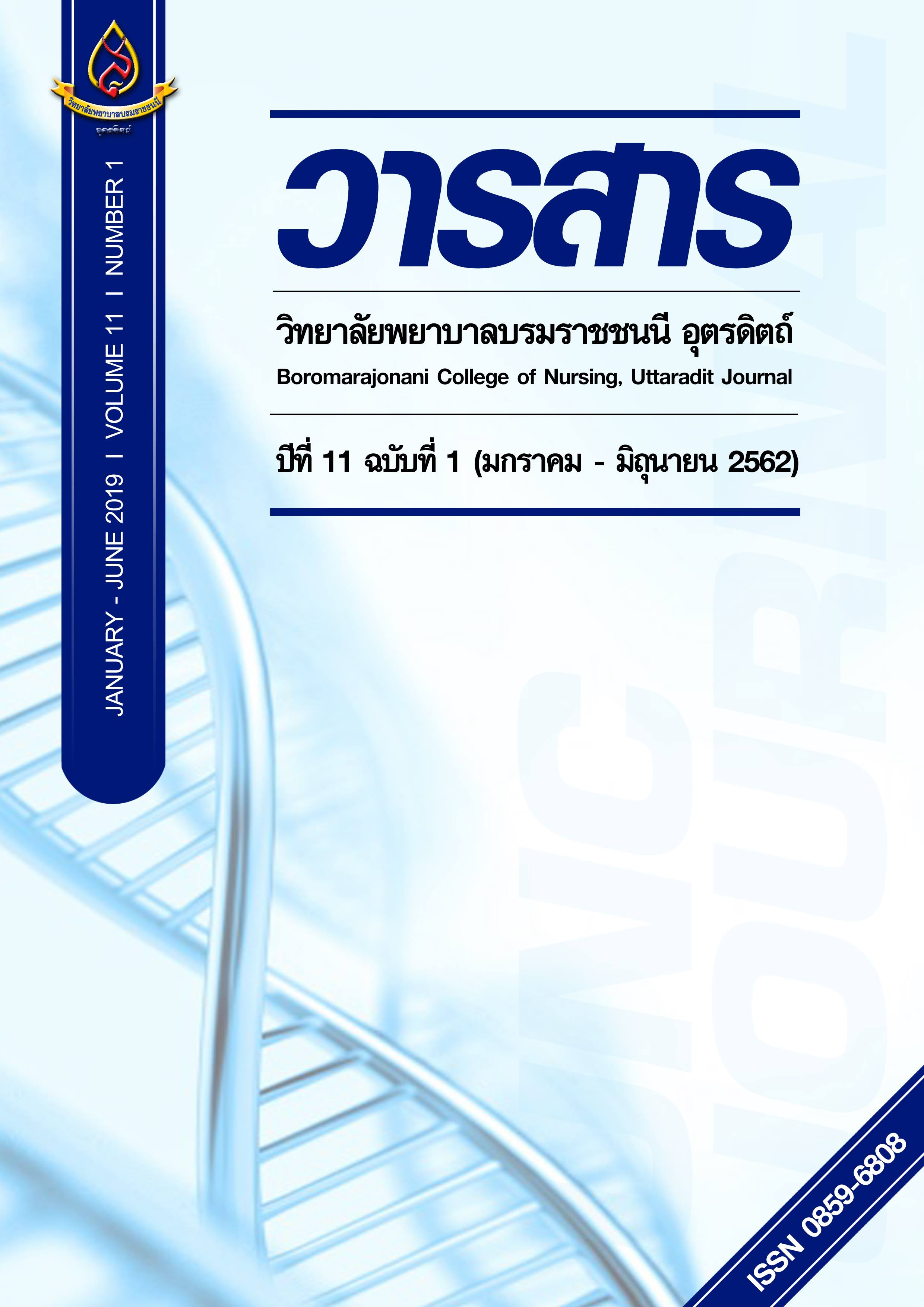ผลของความแตกต่างทางเพศและบุคลิกภาพในผู้ใหญ่ตอนต้นที่มีต่อข้อความภาษาไทยและเสียงดิจิตอลที่เร้าอารมณ์ด้านความประทับใจ
Main Article Content
บทคัดย่อ
การวิจัยเชิงทดลองนี้ มีวัตถุประสงค์เพื่อเปรียบเทียบอารมณ์ด้านความประทับใจของผู้ใหญ่ตอนต้นจำแนกตามเพศและบุคลิกภาพขณะมองข้อความภาษาไทยและฟังเสียงดิจิตอลที่เร้าอารมณ์ด้านความประทับใจ กลุ่มตัวอย่างเป็นนักศึกษามหาวิทยาลัยเทคโนโลยีราชมงคลตะวันออก ที่กำลังเรียนอยู่ในปีการศึกษา 2560 จำนวน 80 คน เครื่องมือที่ใช้คือ แบบประเมินบุคลิกภาพห้าองค์ประกอบฉบับภาษาไทย โดยใช้กรอบของคอสตาและแมคเคร วิเคราะห์ข้อมูลด้วยสถิติพรรณนา และสถิติ two - way ANOVA
ผลการวิจัยพบว่า 1) ผู้ใหญ่ตอนต้นเพศชายและเพศหญิงมีอารมณ์ด้านความประทับใจขณะมองข้อความภาษาไทยและเสียงดิจิตอลไม่แตกต่างกัน 2) ผู้ใหญ่ตอนต้นที่มีบุคลิกภาพแบบเปิดเผยกับบุคลิกภาพกลางๆ มีคะแนนเฉลี่ยอารมณ์ด้านความประทับใจลักษณะพึงพอใจขณะมองข้อความภาษาไทยและเสียงดิจิตอลแตกต่างกันอย่างมีนับสำคัญทางสถิติที่ระดับ .01 (p<.01) 3) ผู้ใหญ่ตอนต้นที่มีบุคลิกภาพแบบเปิดเผยกับบุคลิกภาพกลางๆมีคะแนนเฉลี่ยอารมณ์ด้านความประทับใจลักษณะไม่พึงพอใจขณะมองข้อความภาษาไทยและเสียงดิจิตอลแตกต่างกันอย่างมีนัยสำคัญทางสถิติที่ระดับ .01 (p<.01)
Article Details
บทความหรือข้อคิดเห็นใดใดที่ปรากฏในวารสารวิจัยการพยาบาลและวิทยาศาสตร์สุขภาพ เป็นวรรณกรรมของผู้เขียน ซึ่งบรรณาธิการหรือสมาคมศิษย์เก่า ไม่จำเป็นต้องเห็นด้วย และบทความที่ได้รับการตีพิมพ์เผยแพร่ถือเป็นลิขสิทธิ์ของวารสารวิจัยการพยาบาลและวิทยาศาสตร์สุขภาพ
เอกสารอ้างอิง
2 Cuthbert, B. N., Schupp, H. T., Bradley, M. M., Birbaumer, N., & Lang, P. J. (2000).Brainpotentials in affective picture processing: covariation with autonomic arousal and affective report. Biological Psychology, 52(2), 95-111.
3 Glenn, C. R., & Klonsky, E. D. (2009). Emotion dysregulation as a core feature of borderline personality disorder. Journal of Personality Disorders, 23(1), 20-28.
4 Kanjo, E., Al-Husain, L., & Chamberlain, A. (2015). Emotions in context: Examining pervasive affective sensing systems, applications, and analyses. Personal and Ubiquitous Computing, 19(7), 1197-1212.
5 Kring, A. M., & Gordon, A. H. (1998). Sex differences in emotion: expression, experience, and physiology. Journal of Personality and Social Psychology, 74(3), 686-703.
6 Lee, S. H., Kim, E. Y., Kim, S., & Bae, S. M. (2010). Event-related potential patterns and gender effects underlying facial affect processing in schizophrenia patients. Neuroscience Research, 67(2), 172-180.
7 Lucas, R. E., & Baird, B. M. (2004). Extraversion and Emotional reactivity. Journal of Personality and Social Psychology, 86(3), 473-485.
8 Maneesri, K. (2512). General Psychology. (2nd ed). Bangkok: Choraka printing. (in Thai)
9 Olofsson, J. K., Nordin, S., Sequeira, H., & Polich, J. (2008). Affective picture processing: An integrative review of ERP findings. Biological Psychology, 77(3), 247-265.
10 Olson, K. R., & Weber, D. A. (2004). Relations between big five traits and fundamental motives. Psychological Reports, 95(3), 795-802.
11 Rotter, N. G., & Rotter, G. S. (1988). Sex differences in the encoding and decoding of negative facial emotions. Journal of Nonverbal Behavior, 12(2), 139-148.
12 Schirmer, A., Kotz, S. A., & Friederici, A. D. (2005). On the role of attention for the processing of emotions in speech: Sex differences revisited. Cognitive Brain Research, 24(3), 442-452.
13 Schupp, H. T., Flaisch, T., Stockburger, J., & Junghöfer, M. (2006). Emotion and attention: Event-related brain potential studies. Progress in brain research, No. 156, 31 51.doi:org/10.1016/S0079- 6123(06)56002-9
14 Sisawang, J., & Tongtang, P. (2016). Depression after cardiovascular disease in elderly patients, Boromarajonani College of Nursing Uttaradit Journal, 8(2), 73-85. (in Thai)
15 Sutthana, P. & Noosorn, N. (2018). Online alcohol advertising: A predisposed factor for underage beginning drinkers, Boromarajonani College of Nursing Uttaradit Journal, 10(2), 248-259. (in Thai)
16 Takahashi, H., Matsuura, M., Koeda, M., Yahata, N., Suhara, T., Kato, M., & Okubo, Y. (2008). Brain activations during judgments of positive self-conscious emotion and positive basic emotion: pride and joy. Cerebral Cortex, 18(4), 898-903.
17 Tanglittipaporn, J. (2014). Psychology. (2nd ed). Bangkok: Chulalongkorn University Publishers. (in Thai)


